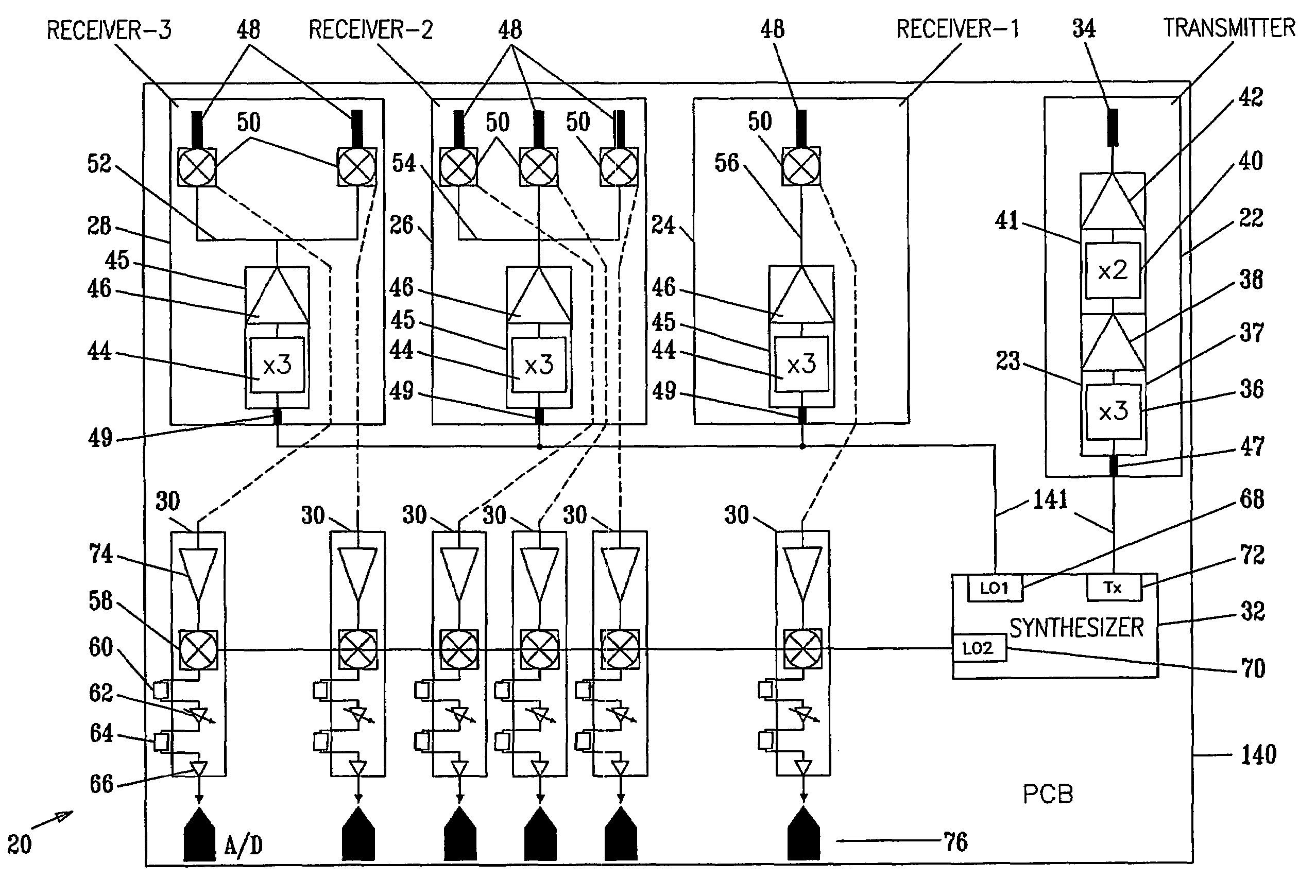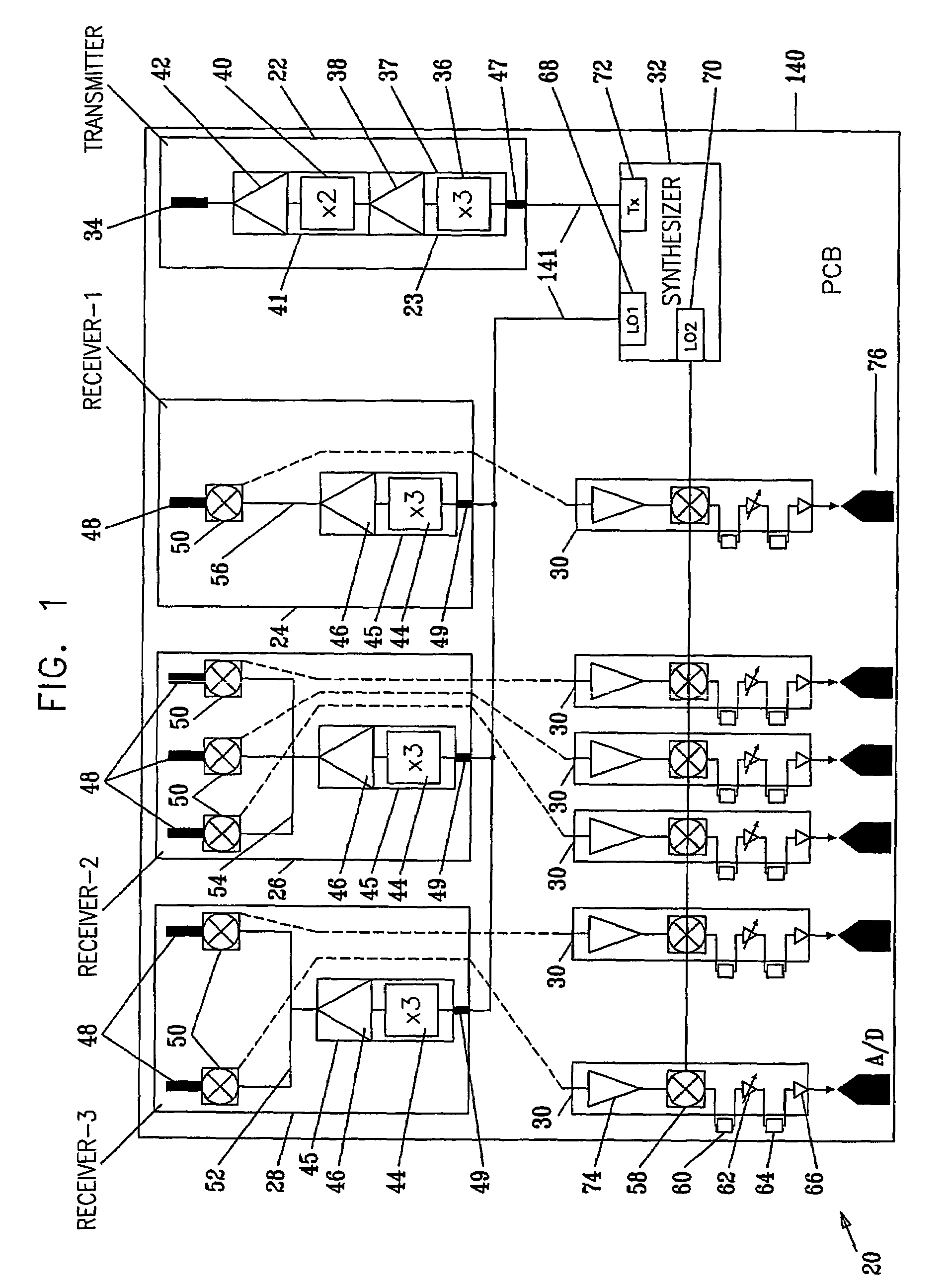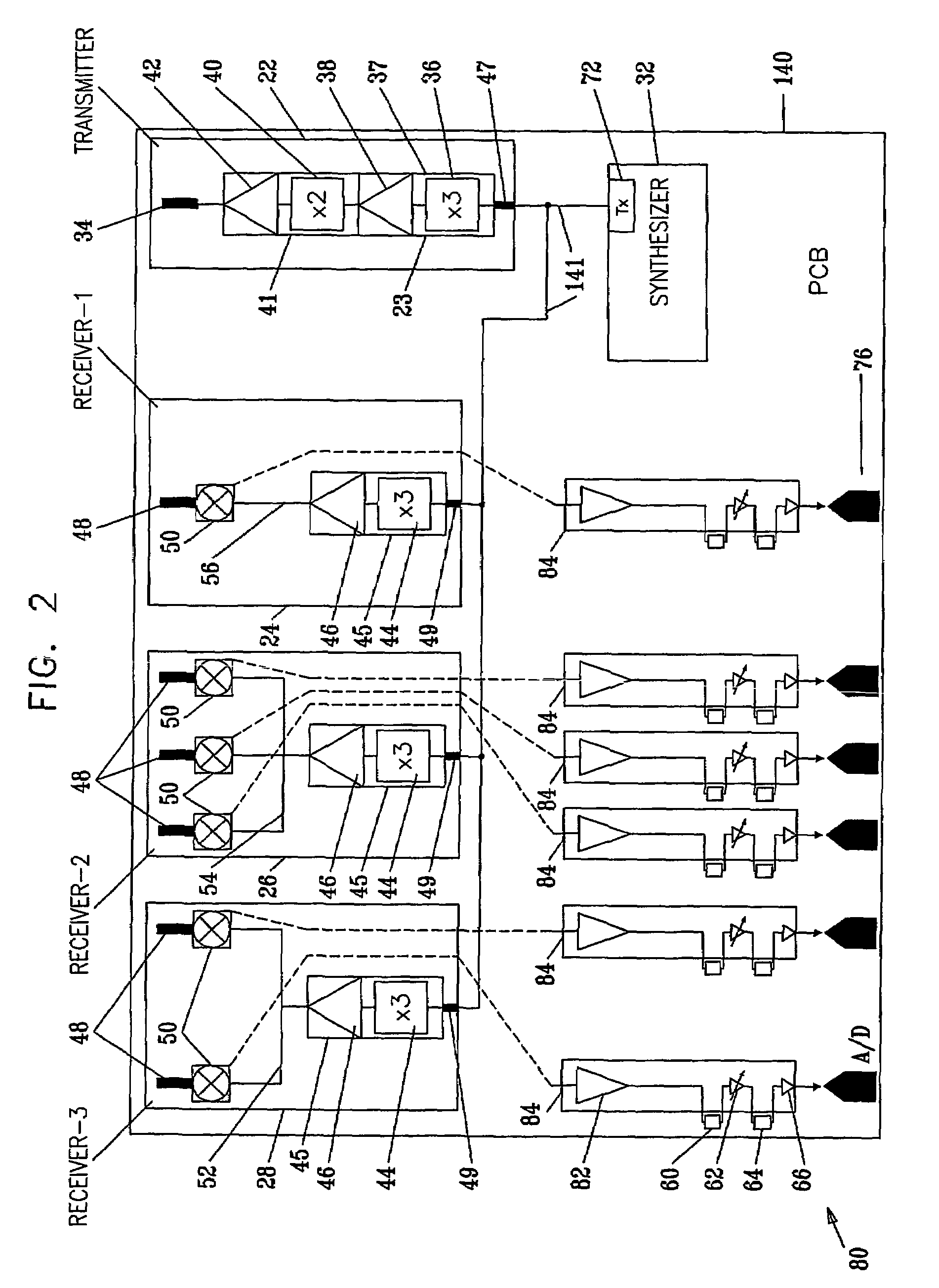Rf system concept for vehicular radar having several beams
a vehicular radar and beam technology, applied in the direction of reradiation, transmission, printed circuit aspects, etc., can solve the problems of unfavorable mass market application, and inability to implement a simple, efficient transceiver, so as to facilitate coupling to the pcb and simplify the mounting of components
- Summary
- Abstract
- Description
- Claims
- Application Information
AI Technical Summary
Benefits of technology
Problems solved by technology
Method used
Image
Examples
Embodiment Construction
[0069]Reference is now made to FIG. 1, which is a schematic block diagram of a millimeter wave multiple beam transceiver 20, according to a preferred embodiment of the present invention. Transceiver 20 comprises a transmitter module 22 which generates millimeter (mm) waves, at frequencies of the order of W-band, the mm waves being coupled to a transmitting antenna via a mm wave microstrip-waveguide transition 34, which acts as a mm wave output port. Herein, millimeter (mm) waves are assumed to be waves having frequencies of the order of W-band. In order to generate its mm waves, transmitter 22 receives a low frequency (LF) reference signal, at frequencies of the order of 12 GHz, from a frequency synthesizer 32. The LF signal is received via a microstrip-microstrip transition 47, which acts as an LF inlet port to transmitter module 22.
[0070]Transmitter 22 comprises a x3 frequency multiplier 36, a first amplifier 38, a x2 frequency multiplier 40, and a second amplifier 42, connected i...
PUM
 Login to View More
Login to View More Abstract
Description
Claims
Application Information
 Login to View More
Login to View More - R&D
- Intellectual Property
- Life Sciences
- Materials
- Tech Scout
- Unparalleled Data Quality
- Higher Quality Content
- 60% Fewer Hallucinations
Browse by: Latest US Patents, China's latest patents, Technical Efficacy Thesaurus, Application Domain, Technology Topic, Popular Technical Reports.
© 2025 PatSnap. All rights reserved.Legal|Privacy policy|Modern Slavery Act Transparency Statement|Sitemap|About US| Contact US: help@patsnap.com



